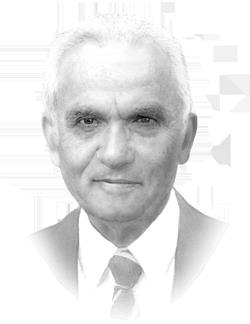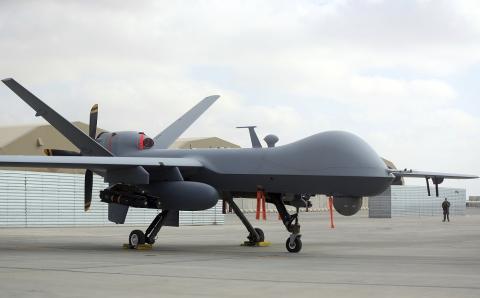
An American F-16 jet fighter that took off from Mosul airport in Iraq hit and destroyed a Turkish drone in Syria early this month. The explanation provided by the US authorities indicated that this was not a mistake but a deliberate act.
This is not the first time that the Turkish and American militaries have clashed. The last serious incident was in 2003, after the Turkish parliament decided to block American troops from crossing Turkish territory to open a new front in the north of Iraq against Saddam Hussein’s forces.
In retaliation for this move, a group of Turkish soldiers operating in Iraqi Kurdistan were captured by American troops on July 4, 2003, and, with hoods covering their heads, were led away to be interrogated. They were kept in custody for 60 hours. This event went into the records as the “hood event” and it poisoned Turkish-American relations for a long time.
Another deliberate act occurred on Oct. 2, 1992, when two US Sparrow missiles hit the Turkish destroyer Muavenet. Research carried out by US officers led to the conclusion that Muavenet may have been targeted by mistake. The incident took place when Muavenet and the USS Saratoga were participating in one of NATO’s regular naval exercises called “Display Determination.” Capt. Kudret Gungor, the commanding officer of Muavenet, and four other officers were killed. The Turkish destroyer became unusable as a result of the attack.
This act is difficult to explain because there are seven steps to be completed before a missile can be fired. The US authorities were not able to justify the event. As compensation, the US approved the transfer of a Knox-class frigate to Turkiye.
Both of these historic cases looked like deliberate acts.
The latest clash took place between the Turkish and US armies in northern Syria. The incident had two parts. In the first part, the US authorities claimed they had informed the Turkish authorities beforehand that the area where the clash took place had been declared a “forbidden operation area” within the framework of the de-confliction mechanism. According to the Turkish-US agreement, the American authorities were supposed to inform the Turkish authorities of the coordinates of US soldiers’ locations. However, this mechanism did not function because the agreement covers only the coordination between the military authorities of the two countries and not their intelligence services. Therefore, such an exchange of information did not take place.
After this incident, the US authorities immediately informed the Turkish authorities that there were US soldiers at the point where the Turkish drone was destroyed.
There is definitely something missing. The two sides look as if they are watching out for each other’s weaknesses.
Yasar Yakis
According to the US version, the Turkish drone entered the forbidden area of Tel Tamer in the north of Syria in the early hours of Oct. 6. It fired several times on its target and later returned to its base. In the second round, the Turkish drone was approaching the same target at a distance of about 500 meters. The US soldiers had to seek refuge in a shelter and asked for protection from the US base in Mosul. An F-16 jet fighter came and destroyed the Turkish drone.
The entire scenario looks as if there was a plan to trap the Turkish drone. Either that or it means nothing more than a lack of coordination between the two allies.
This was preceded by another incident that took place in the heart of Turkiye’s capital, Ankara — the failed Oct. 1 terror attack on the premises of the Turkish Ministry of Interior. As a natural reaction to this attack, Foreign Minister Hakan Fidan said Turkiye would regard all infrastructure, superstructure and energy facilities belonging to Kurdish groups the PKK and YPG as “legitimate targets.”
This situation leads us to question the validity of an alliance. If two allies consider each other to be a potential threat, such an alliance is not worth holding.
If we look at this question from Turkiye’s perspective, the US forces operating in the north of Syria are cooperating with the Syrian Democratic Forces. According to Ankara, the backbone of these forces is mainly composed of the Kurdish fighters of the PKK terrorist organization. Kurdish fighters are entrenched at every level of this organization. Ironically, the US officially recognizes the PKK as a terrorist organization but it does not see any inconvenience in cooperating with the extension of a terrorist organization.
There is definitely something missing in this entire exercise. The two sides look as if they are watching out for each other’s weaknesses.
The top brass on both sides agreed not to stretch this disagreement unnecessarily. A conciliatory approach was displayed by both sides.
In the conversation that took place between Fidan and his US counterpart Antony Blinken, the de-confliction mechanism was underlined once more, but we have to see whether such incidents contribute to strengthening the solidarity between these two NATO allies.
• Yasar Yakis is a former foreign minister of Turkiye and founding member of the ruling AK Party.
X: @yakis_yasar
Disclaimer: Views expressed by writers in this section are their own and do not necessarily reflect Arab News" point of view










